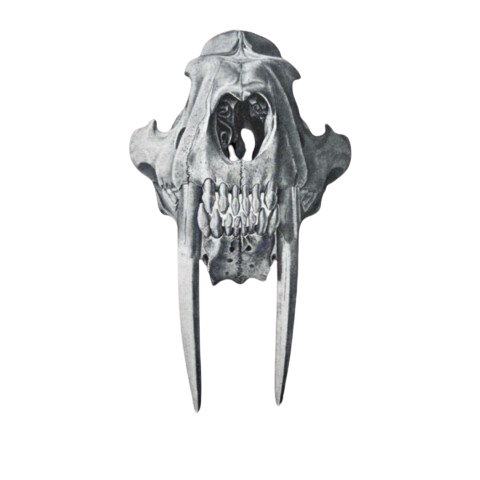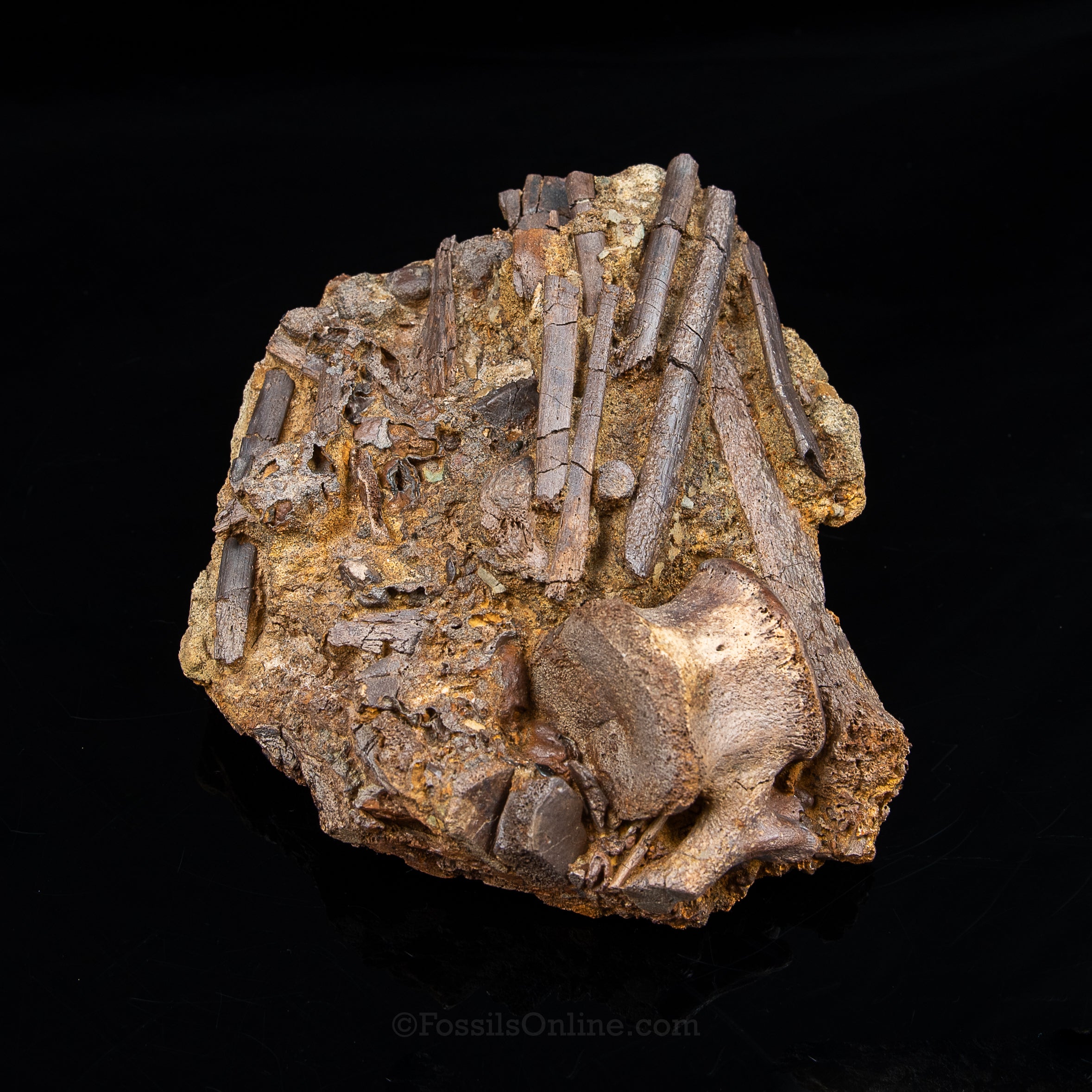
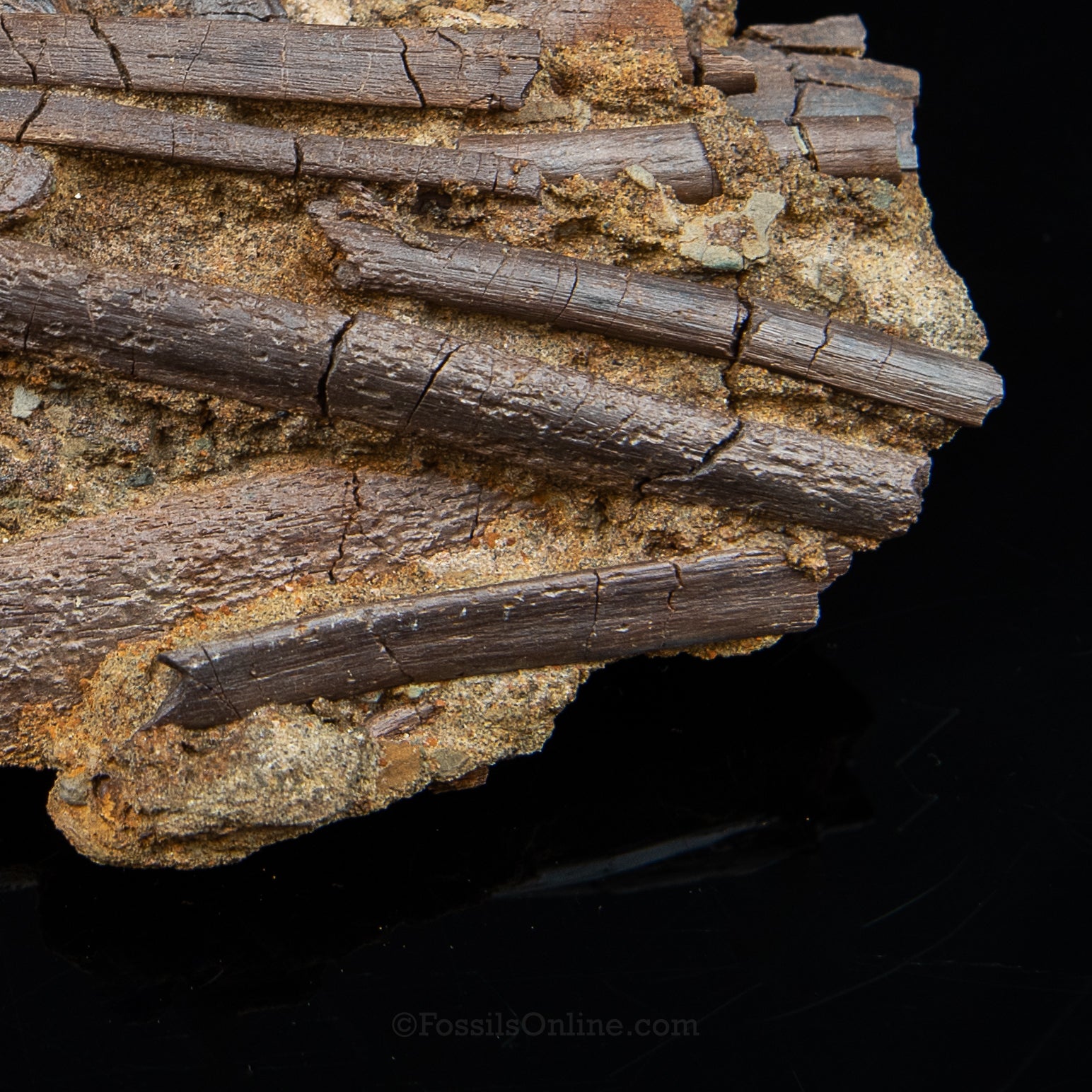
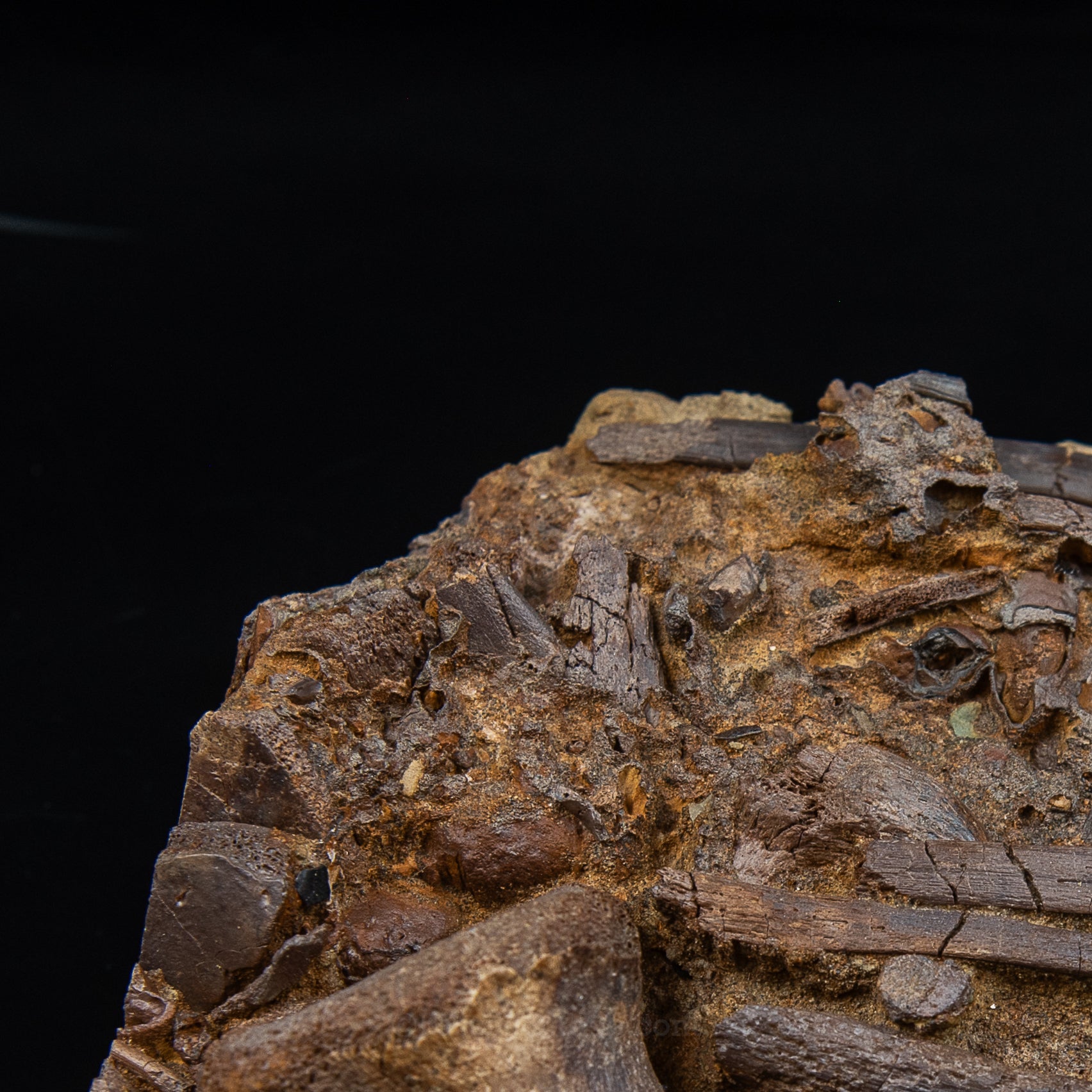
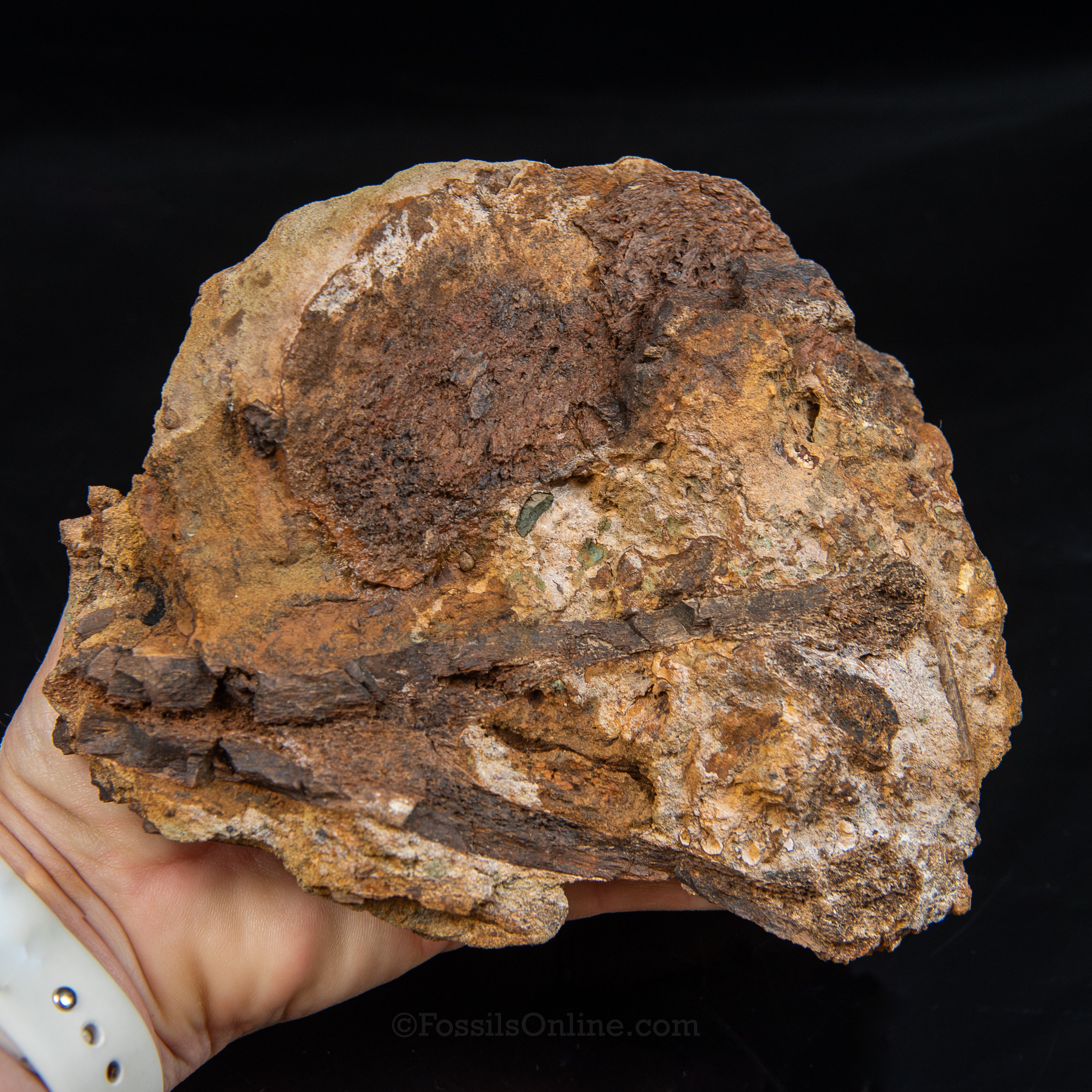
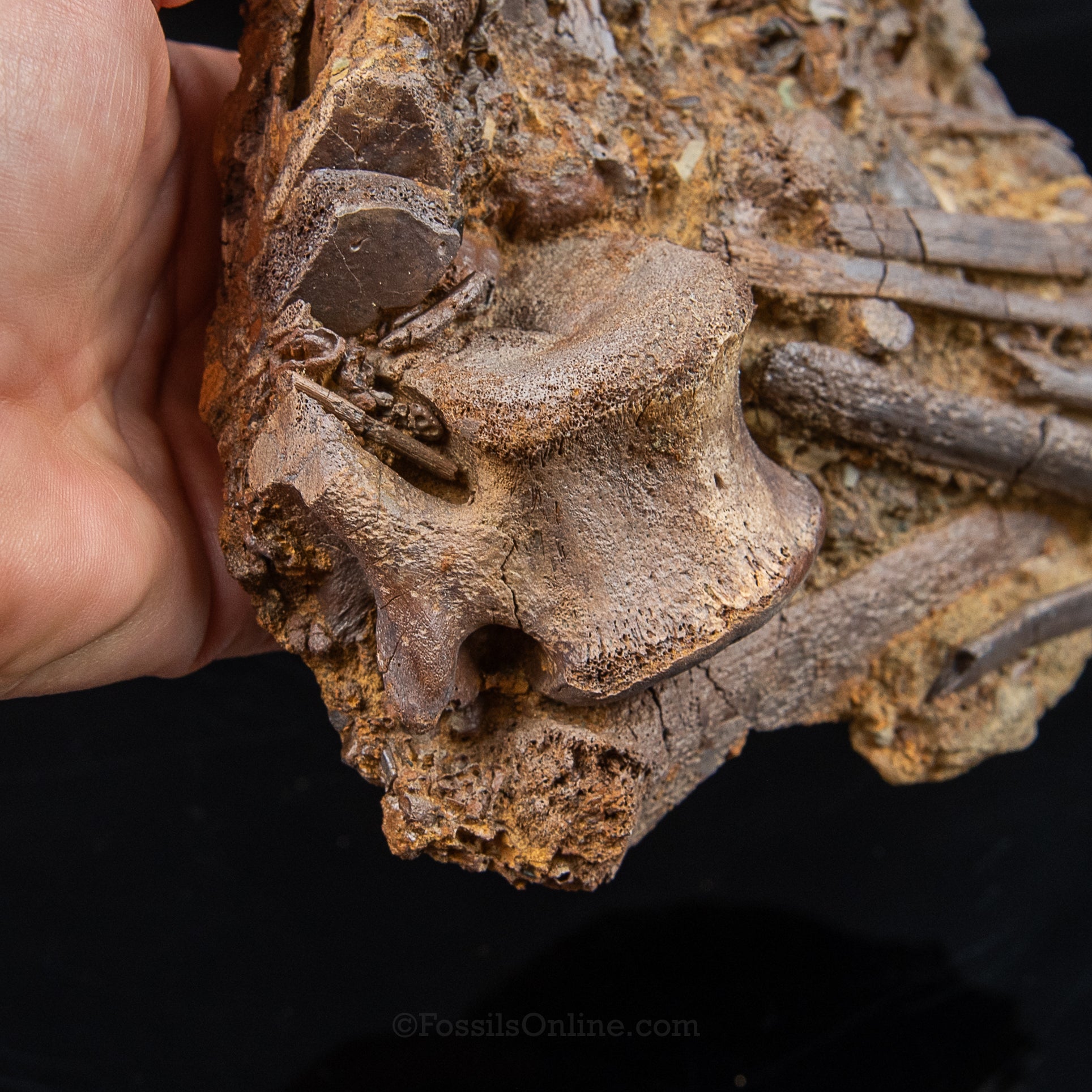
Tendons and Bones in Original Sandstone Matrix- Wyoming
This 7-inch sandstone specimen preserves an impressive assemblage of Late Cretaceous fossils in matrix. It contains bones from Edmontosaurus, a tail vertebra, and ossified tendons, all remaining in their natural position. Unearthed from the Lance Formation in Wyoming, this piece offers a vivid glimpse into the world of the Late Cretaceous, capturing a moment of prehistoric life frozen in stone for over 66 million years.
The Lance Formation in Wyoming, a geological formation from the Late Cretaceous period, is known for its rich fossil content, including the remains of hadrosaurs, a group of duck-billed dinosaurs. Among the most intriguing discoveries from this region are the fossilized tendons of these hadrosaurs, which offer unique insights into the anatomy and physiology of these prehistoric creatures.
Characteristics of Fossilized Tendons: Fossilized tendons in hadrosaurs are primarily ossified tendons, which means they have undergone a process of mineralization, turning them into stone. These tendons are typically found along the spine and tail of the dinosaur. In life, these tendons would have provided support and stability to the animal's body, especially important for large, bipedal or quadrupedal creatures like hadrosaurs.
Species
Edmontosaurus annectens.
AGE
late Cretaceous
LOCATION
Wyoming
FORMATION
Lance
Size
7"x5.5"
Choose options





